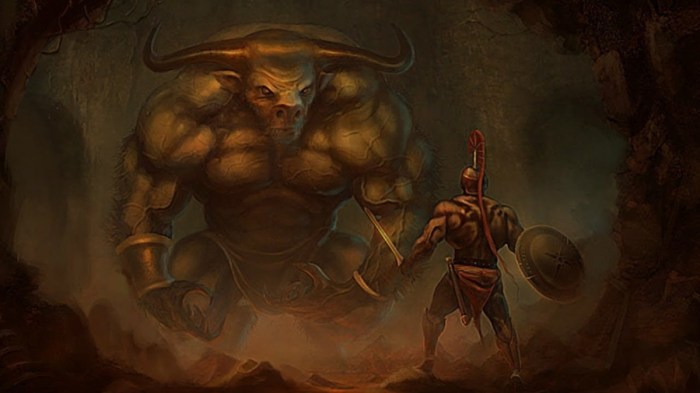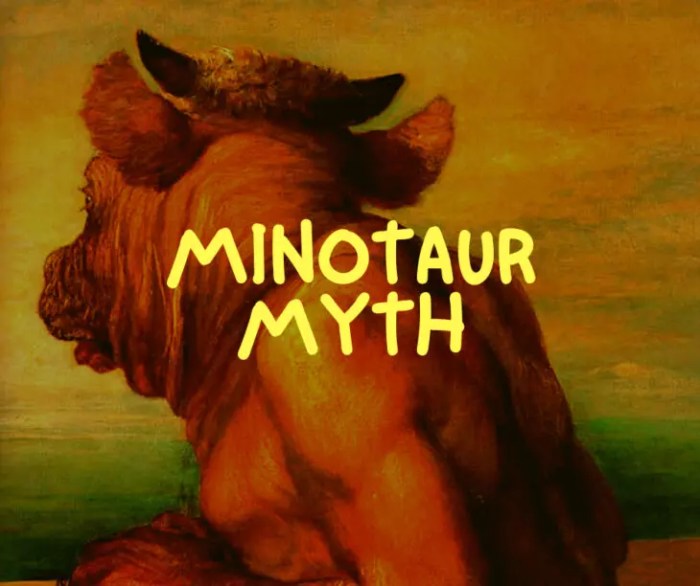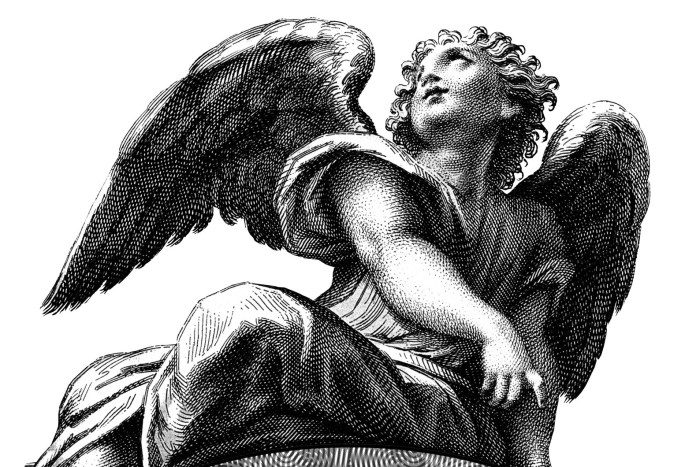Freudians may interpret the Minotaur myth as a manifestation of the Oedipus complex, a cornerstone of Freudian theory. The myth’s central figure, the Minotaur, a half-man, half-bull creature, embodies the repressed desires and fears that lurk within the subconscious, revealing the profound influence of Freudian concepts on mythological interpretation.
This essay delves into the Freudian interpretation of the Minotaur myth, exploring its key elements, symbolism, and implications for understanding human behavior. By unraveling the myth’s psychological underpinnings, we gain insights into the complex interplay between desire, fear, and the transformative power of facing our inner darkness.
Freudian Interpretation of the Minotaur Myth

The Minotaur myth is a complex and fascinating story that has been interpreted in many different ways. One of the most common interpretations is the Freudian interpretation, which sees the myth as a representation of the Oedipus complex.
The Oedipus complex is a theory proposed by Sigmund Freud that states that all boys go through a stage of development in which they are sexually attracted to their mothers and feel hostile towards their fathers. This stage is usually resolved when the boy comes to realize that his father is more powerful than him and that he cannot compete with him for his mother’s affections.
In the Minotaur myth, the Minotaur can be seen as a representation of the Oedipus complex. The Minotaur is a half-man, half-bull creature that is kept in a labyrinth. The labyrinth is a symbol of the subconscious mind, and the Minotaur represents the repressed desires that are hidden within the subconscious.
Theseus, the hero who slays the Minotaur, can be seen as a representation of the ego. The ego is the part of the mind that is responsible for dealing with reality. Theseus’ journey to slay the Minotaur can be seen as a metaphor for the ego’s journey to confront and overcome the repressed desires that are hidden within the subconscious.
The Minotaur as a Symbol of Repressed Desires
The Minotaur is a creature of darkness and violence. He is half-man and half-bull, and he is kept in a labyrinth, a place of darkness and confusion. The Minotaur represents the repressed desires that we all have within us. These desires are often violent and destructive, and they can lead us to do things that we regret.
The labyrinth is a symbol of the subconscious mind. It is a place where our thoughts and feelings are hidden from us. The Minotaur is kept in the labyrinth because we are afraid of our own desires. We are afraid of what we might do if we let them out.
The Minotaur myth can be used to understand the role of repressed desires in human behavior. When we repress our desires, they do not go away. They simply stay hidden in the labyrinth of our subconscious mind, waiting for an opportunity to escape.
The Minotaur as a Projection of Fear, Freudians may interpret the minotaur myth as
The Minotaur is also a symbol of fear. He is a creature that is both human and animal, and he represents the fear that we all have of our own animal nature. We are afraid of our own violence and our own sexuality.
We are afraid of what we might become if we give in to our desires.
The Minotaur myth can be used to understand the role of fear in human behavior. When we are afraid, we often project our fears onto others. We see the Minotaur in others, and we attack them because we are afraid of what they represent.
The Minotaur as a Symbol of Transformation
The Minotaur myth can also be seen as a story of transformation. Theseus, the hero who slays the Minotaur, represents the ego. The ego is the part of the mind that is responsible for dealing with reality. Theseus’ journey to slay the Minotaur can be seen as a metaphor for the ego’s journey to confront and overcome the repressed desires that are hidden within the subconscious.
When Theseus slays the Minotaur, he is not only overcoming his own fears, but he is also overcoming the fears of all humanity. The Minotaur is a symbol of the darkness that we all have within us, and Theseus’ victory over the Minotaur is a symbol of our own victory over our own darkness.
Popular Questions: Freudians May Interpret The Minotaur Myth As
How does the Minotaur represent the Oedipus complex?
The Minotaur symbolizes the repressed desires and fears associated with the Oedipus complex, particularly the fear of the father and the desire for the mother.
What is the significance of the labyrinth in the Minotaur myth?
The labyrinth represents the subconscious mind, a complex and often-hidden realm where repressed desires and fears reside.
How does Theseus’ journey to slay the Minotaur relate to personal growth?
Theseus’ journey symbolizes the transformative process of confronting and overcoming inner demons, leading to personal growth and individuation.


